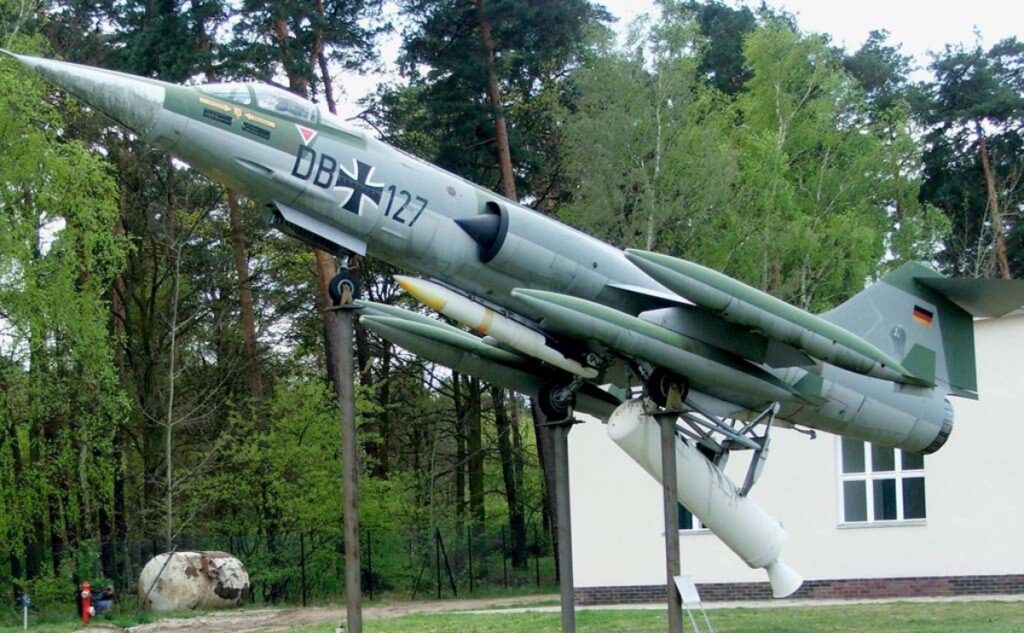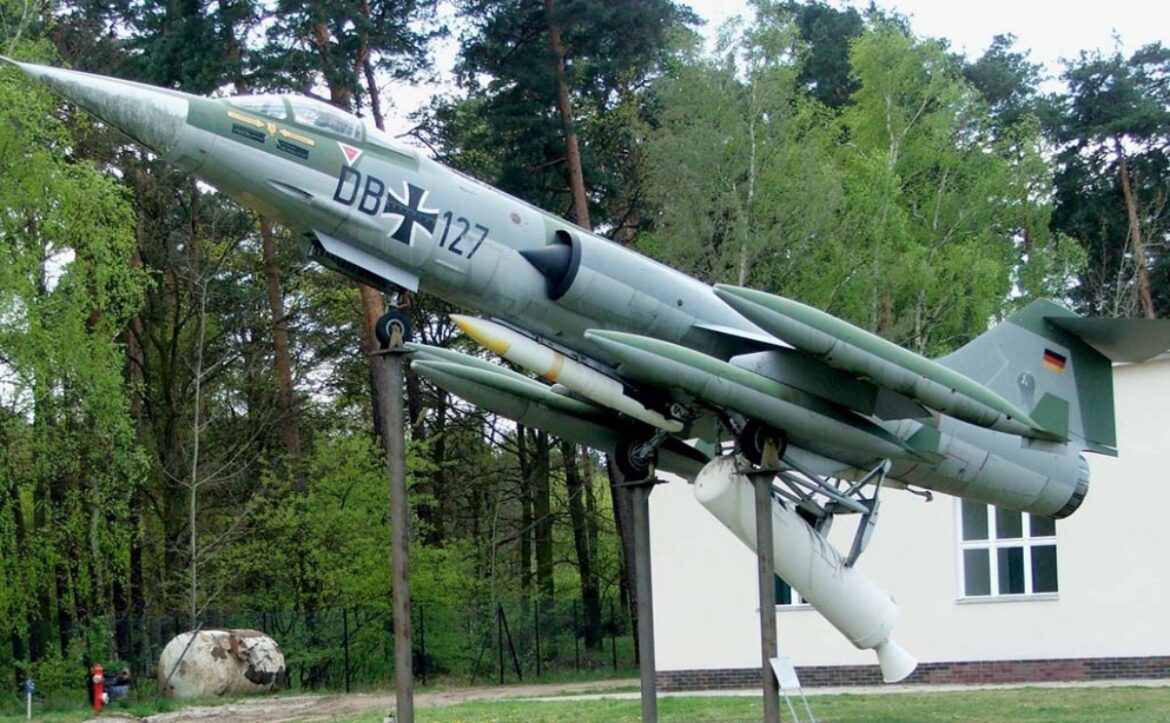‘I identify the target on the radar for a LADD attack [‘toss bombing’] and actuate the Run-in Timer according to my radar display,’ Lt A. Hartl, Luftwaffe F-104G Starfighter pilot
Throughout the 1960s, the Luftwaffe grew in strength and importance. It was the largest operator of the F-104G Starfighter, with seven wings of the type based at Nörvenich, Lechfeld, Büchel, Memmingen, Hopsten, Neuburg, and Wittmund.
Two of these, JG 71 and JG 74, flew the F-104G as an all-weather fighter until they were re-equipped with the F-4F Phantom II in 1973. Five wings were ground-attack units, which also had a nuclear role. Lt. A. Hartl, from Luftwaffe’s JaBoG 33, recalls an F-104G simulated nuclear strike in Michael Napier’s book In Cold War Skies:
‘A single ship, four-[auxiliary] tank mission, and hitting my designated target within +/-5 seconds was basically my daily practice mission when training for the nuclear role.
‘Airborne from Büchel, gear up, I cancel the afterburner and retract the flaps at 350kt. I then take the shortest distance to the entry point of our low-level route. I fly the route (both in and out of LFAs) at 500ft and 450kt.
‘With the four-tank configuration, I have enough fuel for up to 2hrs.
‘The F-104 is very stable at low level – the high wing loading assures a very comfortable ride, especially at over 400kt. On reaching the target, I begin the run in and at the same time accelerate to 540kt; for the last miles, I drop to 250ft.
‘I identify the target on the radar for a LADD attack [‘toss bombing’] and actuate the Run-in Timer according to my radar display. When the timer ends, I pull up at 3.5G and the timer automatically releases the bomb. After climbing at 45°, I roll the F-104 inverted and dive back to low-level, roll the aircraft upright then reduce speed back to 450kt to perform a safe egress from the target area.
‘Returning to Büchel, I route to point ‘Kilo’, a prominent road bridge over the Mosel, which is also the initial point for runway 21, and enter the VFR landing pattern at 1,500ft and 320kt.’
The F-104 was finally phased out of service in northern Europe in 1987, when the last F-104G unit in the Luftwaffe, JaBoG 34 at Memmingen, re-equipped with the Tornado IDS, to become the fourth Tornado wing of the Luftwaffe.
In Cold War Skies is published by Osprey Publishing and is available to order here.
Photo by Pajx, Own work, via Wikipedia


